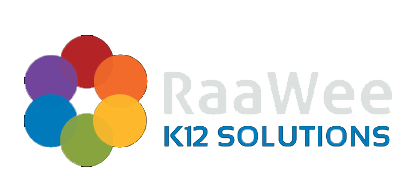Description
We are dedicated to helping educators get their students back to school. The purpose of this information is to point out some roadblocks that impede progress; to help schools reduce chronic absenteeism and get their school-avoidant kids back to learning. We will propose solutions that you can employ to remove these barriers and improve successful school returns.
Problem: School Avoidance Disrupts Families and Challenges Schools.
School avoidance wreaks havoc on families. The following are some examples of how families in our school avoidance alliance community describe it:
- Pernicious, Isolating, Overwhelming, Draining, Gut wrenching, Hopeless, Stressful, and Torturous.
School avoidance also profoundly impacts educators who want to help these kids. These are some ways educators describe it:
- Frustrating, Confounding, Helpless, Discouraging, Time-Consuming, Lack of Interventions, Feeling like a failure, and Tiring.
There has been an underwhelming amount of guidance on this issue, so schools and educators must seek solutions independently.
The good news is that you and your colleagues have the power to improve student outcomes.
Schools have to commit to addressing this problem.
Misinformation and misconceptions will hamper your efforts to engage effectively with students and their families.
School staff must be thoroughly educated to start tackling this problem. Once the team is educated, they will feel empowered to utilize appropriate interventions, strategies, and engagement.
Problem: Truancy and School Avoidance are Different.
School avoidance is motivated by severe emotional distress; the parents know the child is not attending and usually are trying to help their kids back. On the other hand, truancy is usually motivated by pleasure and not anxiety-based, it is concealed from the parents, and kids seek to increase positive emotions.
Labeling school-avoidant kids as truants causes inappropriate and often damaging responses.
Kids with school avoidance are not deliberately ditching school. Internal feelings of distress, discomfort and fear cause their avoidant behavior.
An excellent first step would be to adjust how you define truancy and label kids with school avoidance as truant.
Another huge issue that should be evaluated is punitive responses. And responses that feel punitive to families and their students. Family feedback on this issue reveals the following school responses make families think the school is unfeeling, unkind, and punishing.
Curt and cold attendance letters with threats of fines, truancy charges, and court appearances.
Sending police officers to the home
Failing students without considering their school avoidance is caused by mental health challenges or learning differences.
Utilizing grade retention.
Calling in child protective services with no evidence of parental neglec
The school attendance, mental health, and SEL community have promoted restorative practices over punitive ones for several years. Unfortunately, this guidance needs to trickle down to individual schools faster. These responses often create acrimony between school and home, countering best practices for getting kids back to school.
Problem: Early Interventions Take Work to Achieve.
Early interventions are among the most critical drivers for reducing school avoidance and getting students back quicker. Performing early action is dependent on the following factors:
-
Educating families on school avoidance, since most parents are unaware of it, they often miss early signs and are unsure how to help the situation.
-
Families don’t realize their school has a team of mental health professionals available to help them.
-
Provide your staff with school avoidance professional development to recognize signs, signals, and triggers. Being educated on this unique challenge will show them how to respond and strategically approach each school-avoidant student according to their individual needs.
-
Another essential suggestion to help improve early interventions is to include your school counselors, attendance staff, school nurses, and truancy folks when you provide school avoidance professional development. These professionals are on the front lines and have access to these students first. They can intervene in the early stages before absenteeism becomes chronic.
Closing
The problem of school avoidance will continue to grow if schools don’t reevaluate their responses and interventions. You may not realize it, but you are an agent of change. It takes one person to start the process. Educators like you deserve that feeling of self-satisfaction and gratitude when you contribute to helping a child back to school and improve their life trajectory.

About the Author
For the past decade, Jayne has been helping families get kids with school avoidance back to school. In 2014, she started the School Avoidance Alliance to educate families and schools on school avoidance best practices and evidence -based solutions. In additional to the School Avoidance Alliance website, Jayne developed one-of-a-kind educational resources for both parents and educators. Some of their resources are, The School Avoidance Parent’s Ultimate Guide to Working with Your School, The School Avoidance Master Class for Parents: A Tier 2 and Tier 3 Intervention for chronic absenteeism, a course schools purchase for parents, and an Educator training course called, Everything You Need to Know to Get Your Students Back to School.
Jayne serves on the International Network for School Attendance (INSA) conference committee and was recently honored as a featured speaker at INSA’s Making Waves in School Attendance Annual Conference in the Netherlands in October 2022. She’s also been featured in Education Week, The Washington Post, CBS News, Yahool Life and USA Today.




